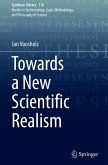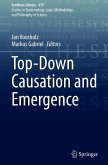This book offers a unique perspective on the evolution of scientific theories through the lens of their changing complexity.
To explore this non-trivial connection, the author draws on well-known historical cases from the philosophy of science tradition to test the central theses of the work. At the same time, the book develops a conceptual framework in which the debates on emergence and complexity play a central role.
The opening chapter provides the historical background of emergence, examining both classical and contemporary perspectives, highlighting diverse viewpoints and their contributions to the current discussion.
The second chapter turns to the foundations of complexity science, detailing its key methodologies and emphasizing the role of information in describing and modeling systems.
Building on this foundation, the book introduces a novel quantitative definition of emergent properties, grounded in the concept of parametric model complexity. It discusses how slight variations in control parameters can generate universal features and explores the implications of these dynamics for our understanding of systemic behavior.
Finally, the author shows how this framework illuminates critical aspects of scientific practice, ranging from the criteria guiding theory choice to the relationship between technological innovation and the risk of the appearance of anomalies. By combining historical analysis, conceptual innovation, and formal modeling, the book presents a compelling vision of how complexity and emergence can be predictive indicators of theoretical transformation, recognizing the moments when our current models have reached their limits.
To explore this non-trivial connection, the author draws on well-known historical cases from the philosophy of science tradition to test the central theses of the work. At the same time, the book develops a conceptual framework in which the debates on emergence and complexity play a central role.
The opening chapter provides the historical background of emergence, examining both classical and contemporary perspectives, highlighting diverse viewpoints and their contributions to the current discussion.
The second chapter turns to the foundations of complexity science, detailing its key methodologies and emphasizing the role of information in describing and modeling systems.
Building on this foundation, the book introduces a novel quantitative definition of emergent properties, grounded in the concept of parametric model complexity. It discusses how slight variations in control parameters can generate universal features and explores the implications of these dynamics for our understanding of systemic behavior.
Finally, the author shows how this framework illuminates critical aspects of scientific practice, ranging from the criteria guiding theory choice to the relationship between technological innovation and the risk of the appearance of anomalies. By combining historical analysis, conceptual innovation, and formal modeling, the book presents a compelling vision of how complexity and emergence can be predictive indicators of theoretical transformation, recognizing the moments when our current models have reached their limits.








